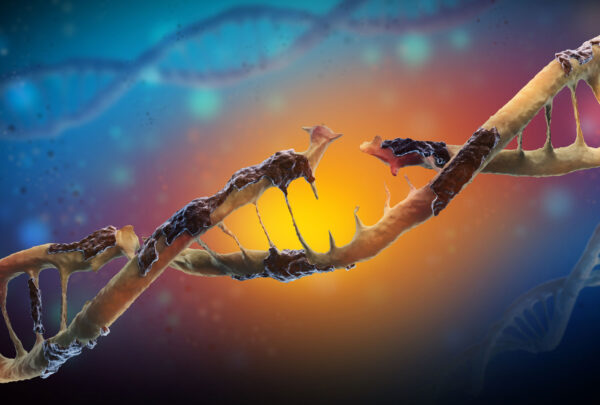
DNA double-strand breaks (DSBs) and potential misrepair events can result from the use of gene editing tools like CRISPR/Cas systems. These misrepairs are associated with perilous structural variations in the genome which can endanger the long-term success of gene and cell therapy programs. Genomic instability resulting from these changes is a known danger, particularly when multiple DSBs are present concurrently. They can disrupt gene regulation, contribute to diseases like cancer, and sabotage anti-cancer tools like CAR-T and CAR-NK products. As such, methods which reliably detect these structural changes can make the difference between regulatory approval and repudiation. One such method is directional Genomic Hybridization (dGH).
dGH is a hybridization-based method like FISH and microarray, but dGH probes hybridize to only one side of the target chromosome, to only one of the two chromatids. Classical molecular cytogenetic techniques, like FISH and G-banding, have been instrumental in studying structural variations. However, these methods are relatively low-resolution, struggling to detect small inversions especially. While break apart FISH probe designs can detect inversions very effectively, they must be relatively large rearrangements, and foreknowledge is needed of where in the genome the event will occur. Meanwhile, the location of off-target structural changes caused by CRISPR/Cas systems are challenging to predict. dGH probe sets can be designed to target one whole chromatid, meaning that even an inversion smaller than five kilobases will be visible as a relocation of fluorescence onto the sister chromatid. Meanwhile, dGH detects other types of rearrangements, like translocations, deletions, duplications, etc. with efficacy equal to that of traditional FISH assays.
Perhaps dGH has an advantage in resolution over classical molecular cytogenetic techniques, yet it still relies on probe hybridization, meaning sequencing methods would nevertheless yield more accurate data. Not quite. dGH data is generated via analysis of many individual chromosome complements, rather than on sequences of fragmented DNA. In other words, there is no alignment step, no bioinformatic intermediary. For instance, whole-genome sequencing (WGS) can struggle to confidently detect low-prevalence events while the single-cell nature of dGH removes uncertainty about whether a rearrangement can be designated as clonal. Complex rearrangements can also confound sequence alignment methods. In a comparison between dGH and next-generation sequencing (NGS), both methods detected the presence of a translocation, but only dGH revealed that in every cell there was also a small inversion at the site of the rearrangement1.
In the field of biotechnology, seldom is there one method that is “best.” While a given set of circumstances may showcase the advantages of one technique, changing the sample type, preparation method, budgetary resources, or time limitations may point to another approach as a better fit. In addition, confirmatory data from an orthogonal method is frequently needed. As such, different technologies complement each other, rather than truly being in a black-and-white competition. Sequencing can provide base pair-level resolution, while dGH can serve to correct structural and orientation data errors which might otherwise have gone unnoticed, especially in regions rich in repetitive DNA2. dGH is certainly a powerful technique, and it will continue to be paired with other similarly fruitful technologies to advance the scientific efforts from which we all benefit.
Reference
- Bailey, S. M., Cross, E. M., Kinner-Bibeau, L., Sebesta, H. C., Bedford, J. S., & Tompkins, C. J. (2024). Monitoring Genomic Structural Rearrangements Resulting from Gene Editing. Journal of Personalized Medicine, 14(1), 110. doi.org/10.3390/jpm14010110
- Cornforth, M. N., Anur, P., Wang, N., Robinson, E., Ray, F. A., Bedford, J. S., Loucas, B. D., Williams, E. S., Peto, M., Spellman, P., Kollipara, R., Kittler, R., Gray, J. W., & Bailey, S. M. (2018). Molecular Cytogenetics Guides Massively Parallel Sequencing of a Radiation-Induced Chromosome Translocation in Human Cells. Radiation research, 190(1), 88–97. https://doi.org/10.1667/RR15053.1
